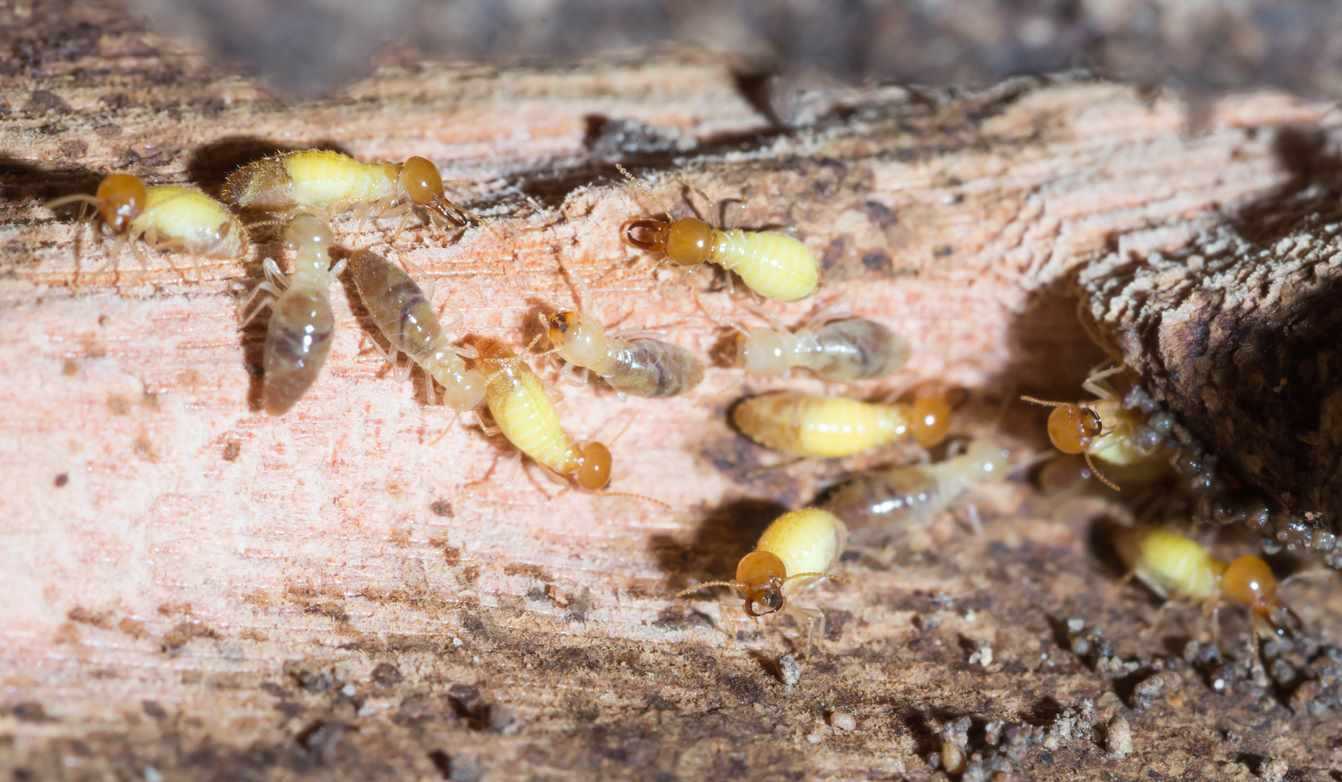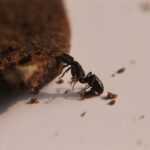While termite season doesn’t necessarily have a beginning or end, homeowners often notice the warning signs of termite issues as the weather warms up in March and April.
Whether you’ve historically had issues with termites, or you’re noticing discarded swarmer wings and other tell-tale signs of these wood-munching menaces zoning in on your living space as spring approaches, it’s critical to be prepared for termite season. These pests can cause massive property damage, so you don’t want to leave yourself vulnerable.
As your local team of termite control professionals, PURCOR is here to educate you as a homeowner and provide the targeted, effective treatment you need for peace of mind. In addition to our homeowner’s guide to termite season below, you can always give our team a call or contact us online when you’re ready to schedule an inspection of your property.
When is termite season?
Subterranean termites usually begin swarming in the months of early spring, around March and April. This behavior can continue through the summer months, often lasting until early fall. You’re most likely to see a swarm of subterranean termites on a warm day directly following rain. This is when termites leave their nest to seek a new home, which means your property could be at risk if they manage to find a way in.
Drywood termites, on the other hand, tend to swarm in the late summer months and into fall. This means that termites are a concern all year long, especially considering that termites don’t die in the winter. That being said, early spring through early fall is generally when you can most expect to encounter a termite problem, and consequently when you should be the most vigilant against these pests.
What do termites look like?
When you’re dealing with termites in the United States, there are three different species you may be dealing with during termite season, depending on where you live — dampwood termites, drywood termites, and subterranean termites. And no matter which termite species has its sights set on your home, it’s cause for concern.
Dampwood Termites
The first species of termite you may encounter are the dampwood termites. As the larger termite subspecies, dampwood termites have prominently large, dark brown heads with equally large mandibles for carving through wood. True to their name, they’re drawn to soggy, water-damaged wood in or around homes, such as roofing, beams in poorly-sealed attics, or basements and crawl spaces with moisture issues.
Drywood Termites
You may think you’re safe from termite issues if you don’t have water-damaged wood issues around your home — we hate to disappoint you, but drywood termites could be just around the corner. While they primarily live in smaller colonies that chew through dry wood at a more gradual pace, they’re still capable of causing expensive damage. Unlike their larger, dark colored cousins, drywood termites have more narrow, cream to light brown bodies.
Subterranean Termites
The final and trickiest termite species to deal with in the U.S. is none other than subterranean termites. What they lack in size, they make up for in the amount of destruction they’re capable of causing. Subterranean termites have light yellow bodies, dark heads, and an appetite for both damp and dry wood. To make matters worse, they tunnel into the ground near wood-filled homes to establish their colonies and begin chewing their way through your living space.
What do termites eat?

Some wood-destroying organisms (WDOs), such as carpenter ants, only chew through the wood in your home to create tunnels for their colonies or to travel. Termites, on the other hand, chew on and consume wood to absorb its cellulose – essentially, plant fiber – for energy.
They may be small, but they’re constantly chewing through wood to feed themselves and their colonies. Subterranean termite colonies, for example, can have between 60,000 and two million members — that’s a lot of mouths to feed!
Additionally, it’s not just your home’s wood that’s in peril. Termites are flexible when it comes to deriving the cellulose they need to survive, and may also feed on other household materials, such as:
- Plants around your backyard
- Your home’s insulation
- Clothes, carpeting, and other natural fibers
- Particle board
- Paper-covered sheetrock, plaster, or drywall
- Cardboard storage boxes in your attic, garage, or basement
Essentially, if there’s cellulose to be drawn out of something around your property, you can count on termites to find it.
How To Prepare for Termite Season

If you’re wondering how to get rid of termites, or perhaps even prevent them from reaching your home, the first piece of termite season advice you’ll always hear from our team is to remove termites’ food sources.
Whether you’re removing water-damaged wood from your home, or treating your property with PURCOR’s ground-breaking termite control technology and treatments, the more you can do to make your home unappetizing to termites, the better.
As a homeowner, however, your own personal experience and skills for preventing termites may need a helping hand. That’s why it’s vital to set up an inspection of your home with our pest control professionals. Even if you’re not dealing with an active termite infestation, we have the expertise and knowledge you need to identify and address any conducive conditions for issues during termite season.
Unmitigated moisture, wood-to-earth contact, and unmonitored crawl spaces play some of the largest roles in helping a termite nuisance turn into a termite invasion. Our dedicated pest control professionals can help you be proactive by inspecting for these issues and providing a treatment plan recommendation accordingly.
Be Ready for Termite Season with PURCOR Pest Solutions
On the fence about pest control applications? You can put your mind at ease knowing that our pest control solutions are environmentally-conscious and safe to apply in homes with children and pets. Our approach consists of Integrated Pest Management, or IPM, to use a wide range of pest control methods to ensure the most minimal disruption to your daily life. Common pest control methods we use as part of IPM include:
- Bait stations
- Low-impact products
- Exclusion techniques around buildings
- Continual monitoring of pest activity
- Ongoing education and training for service specialists
Don’t let termite season — or the termites themselves — creep up on you this spring. At PURCOR, we’re dedicated to helping you prepare your home against tiny invaders so you can get back to your life and leave the pest control to us.
If you’re ready to prepare for termite season with a pest control team that has the expertise, knowledge, and pest control technology you need, look no further than PURCOR. Contact us online or give our team a call today and say goodbye to termites tomorrow!
"*" indicates required fields
"*" indicates required fields




